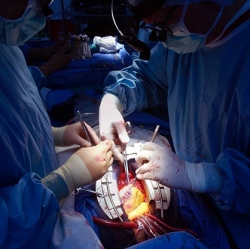
University of Bradford scientists, led by Dr. Diana Anderson, hypothesized that DNA in white blood cells from cancer patients wouldn’t be able to withstand or repair UV damage as well as DNA from healthy volunteers. Why? Because cancer patients’ immune systems would be working overtime even in the disease’s earliest stages.
After subjecting samples to ultraviolet light, the scientists pulled their DNA apart in electrophoresis gel (a traditional DNA analysis tool). They found white blood cell DNA from healthy patients showed up in short streaks whereas the DNA from precancerous or cancer patients had longer streaks, indicating more damage from the UV light.
Though the samples were randomized and coded, the researchers correctly identified 94 healthy subjects, 58 patients with cancer, and 56 patients in the precancerous stage of disease. The samples were from patients with melanoma, colon cancer, and lung cancer, next steps include broader trials over more types of cancer.
Buy Time by Slowing Cancer’s Spread
Locating a consistently accurate biomarker of cancer in the blood could improve diagnosis, but what then? Cancer is dangerous in one organ, but deadly when it spreads to others. What if we could freeze the disease in its tracks?
In a recent preclinical study, Jennifer Cochran, a Stanford associate professor of bioengineering, and Amato Giaccia, professor of radiation oncology, say they significantly slowed cancer metastasis in mice using a lab-designed decoy protein.
Tumors metastasize when bristly Axl proteins on a cancer cell’s surface interact with Gas6 proteins. When these two proteins link up, the cell is able to break off from the main tumor and move to other locations in the body.
Seek-and-Destroy Cancer Cells, and Only Cancer Cells
After finding and slowing cancer, we need to eliminate it from the body. Current cancer treatments employing radiation and chemotherapy are a bit like a shotgun blast or carpet bombing run. They lack precision and collateral damage is significant. A better option would be something like a laser-guided missile destroying only cancer cells.
